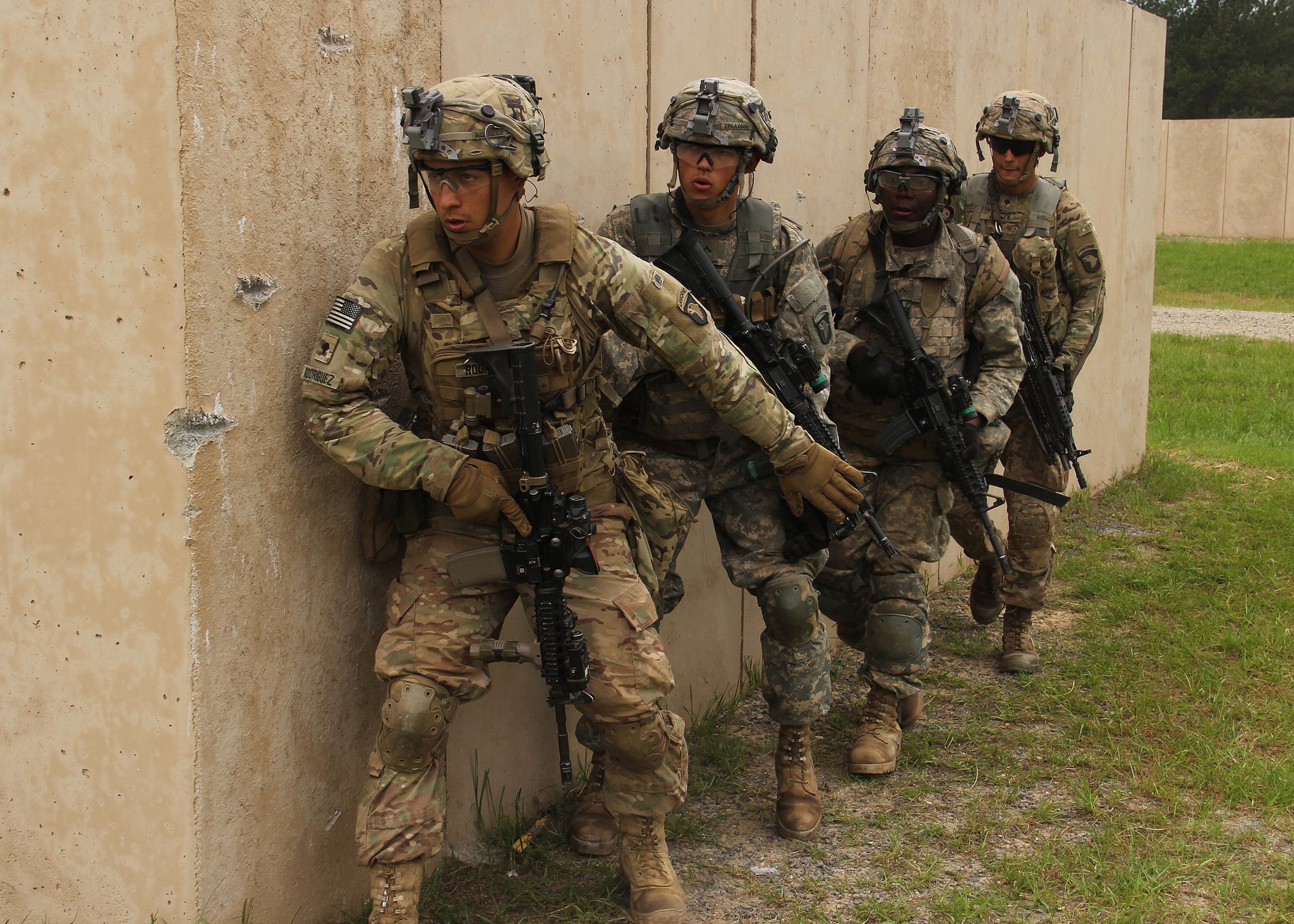The rifleman of the future could fire from the hip, shooting dart-like projectiles from polymer, telescoped casings.
His guide? A digital display in a visor that calculates ballistics, windage and range, and even corrects aim when the shooter is off target — all of it designed to make it nearly impossible to miss a target.
These are just some of the possibilities explored in a recent two-year study that took a comprehensive look at how to build the rifle, ammunition and fire control system together, in order to build the next generation of military small arms.
As researchers at the Army’s Maneuver Center of Excellence digest the results of the Small Arms Ammunition Configuration study, they and other experts discussed some of the key findings in an interview with Army Times.
The study, which has been completed but hasn’t been released, looked at existing threats and where individual weapons fit into the larger Maneuver Force Modernization Strategy.
“What are we building, what are we going to have to defeat, what are we going to have to fight,” said Col. Travis Thompson, director of the Soldier Requirements Division, which is part of Training and Doctrine Command Capability Manager–Soldier. “We have to identify that pacing threat as it relates to the future.”
Whatever form the new rifle takes, the key is lethality, he said.
“You don’t want to shoot the guy so you can get closer to shoot him again,” Thompson said. “If I can turn heads into pink mists at 600 meters, then I don’t have to worry about them at 300 meters.”
The colonel noted four main takeaways from the study:
- Caliber doesn’t matter as much as you think.
- Energy at the target does matter.
- Advanced bullet technology matters.
- Fire control matters.
Fire control, or hitting your target, had the largest impact. While weapons design and using advanced bullet technology will contribute heavily to the rifle of the future, how a soldier or Marine aims that weapon will change most radically.
But to get there, Thompson said, the engineering must join all facets of development. The weapon can’t be built simply because there are existing stockpiles of ammunition, as was the case with early 20th Century small arms.
Nor can it stand alone as a system, requiring constant upgrades and ever more items strapped to it to make it more effective, such as the M16 and M4 variants.
“For the next generation, we wanted to make one end-all solution,” said Brig. Gen. Brian Cummings, who leads Program Executive Office Soldier, in a separate interview. “With the M4, when you look at it, it’s got all these things hanging on top of it. We keep evolving it by putting things on it.”
Researchers are looking at newly designed bullet bodies, casings and calibers while also considering advanced propellants that may not use traditional gunpowder at all.
But even the bullet as it is currently understood could morph into a “long rod” design, a metal dart now found embedded inside anti-tank rounds.
One questions researchers asked themselves, Thompson said, was what existing munitions or technology can be miniaturized and applied to small arms.
Improvements in the next three to four years have the potential to surpass 40 years of evolutionary improvements, Thompson said.
Bradley Fighting Vehicle weapons systems have integrated laser range finders with ballistics solvers, helping shooters put larger rounds on target. They’ve been in existence for years and are used effectively in combat.
Now, advances in technology can bring some of those capabilities to a rifle, Cummings said.
Technology currently being tested, such as the Family of Weapons Sights-Individual, or FWS-I, connect the rifle and night vision goggles, allowing the shooter to aim by lining up the weapon without putting the weapon to his face and shoulder, as he normally would.
That type of sighting will likely be incorporated into future fire control systems, Cummings said.
Cummings, whose command oversees nearly all aspects of what will go into the new rifle except the ammunition, called the work a “mini-Manhattan Project,” a nod to the World War II project to create the first atomic bomb.
The one-star said most of the work on small arms will be pioneered in the development of the Next Generation Squad Weapon, which could be fielded by fiscal year 2022.
That weapon will incorporate many of the design changes, but might not have all fire control abilities that researchers want, Cummings said. More advances would come by 2025.
The end state is a wireless fire control system that senses wind, calculates distance and compensates for ballistics, all while being able to spot heat signatures through thermals.
Thompson likened it to taking the abilities of advanced shooters such as snipers down to the basic shooter level, without the need for extensive training and experience.
Todd South has written about crime, courts, government and the military for multiple publications since 2004 and was named a 2014 Pulitzer finalist for a co-written project on witness intimidation. Todd is a Marine veteran of the Iraq War.





